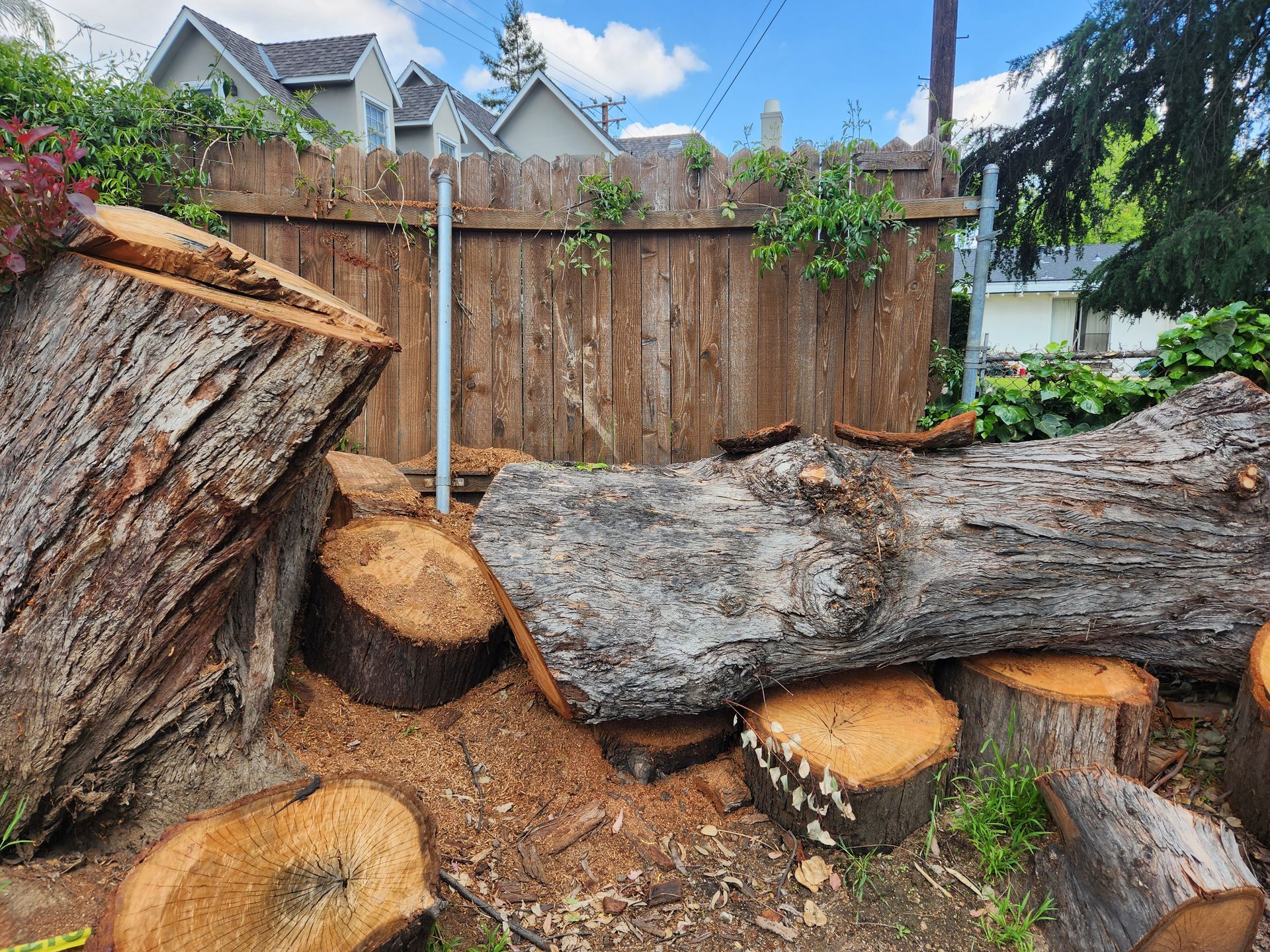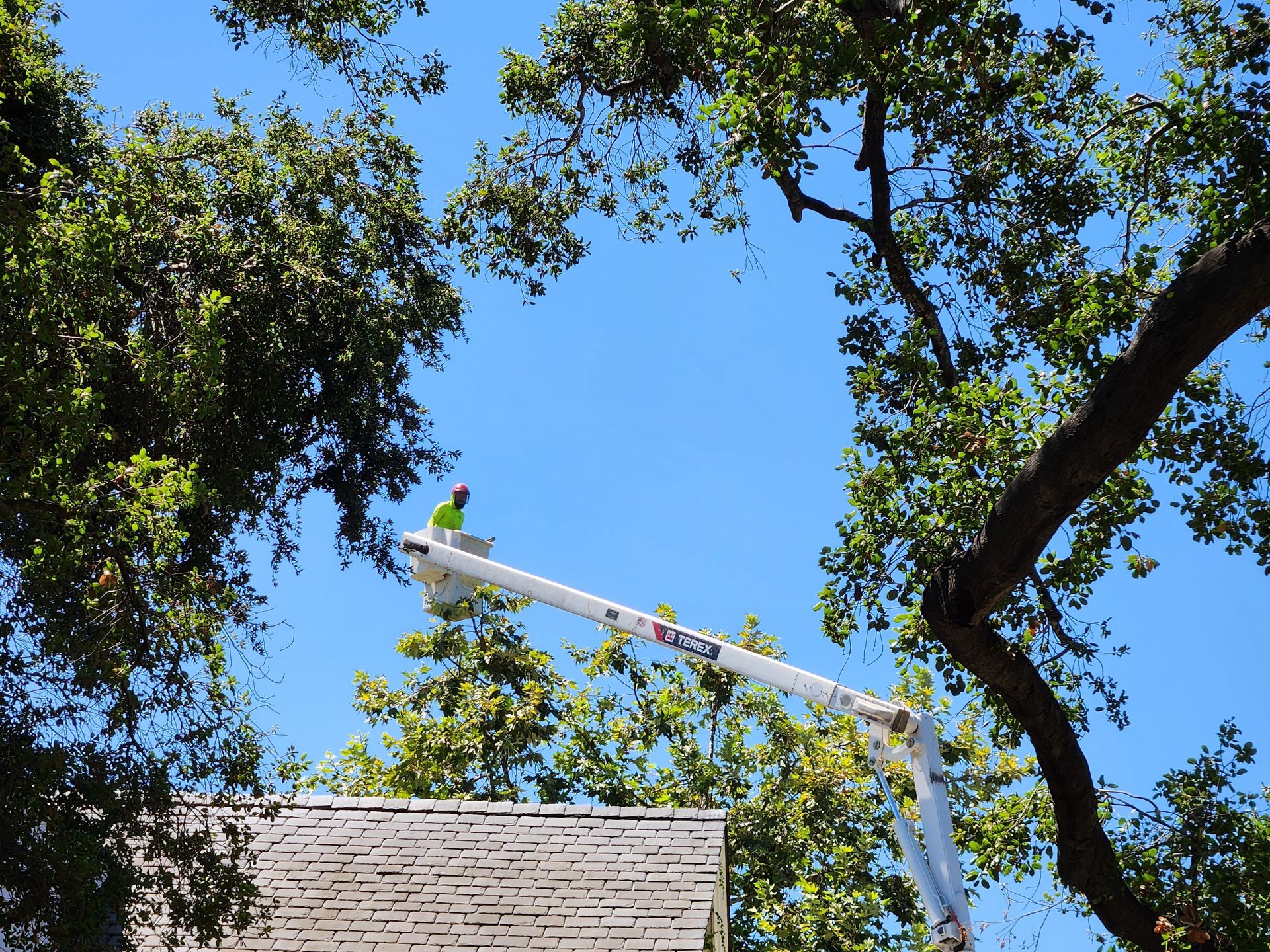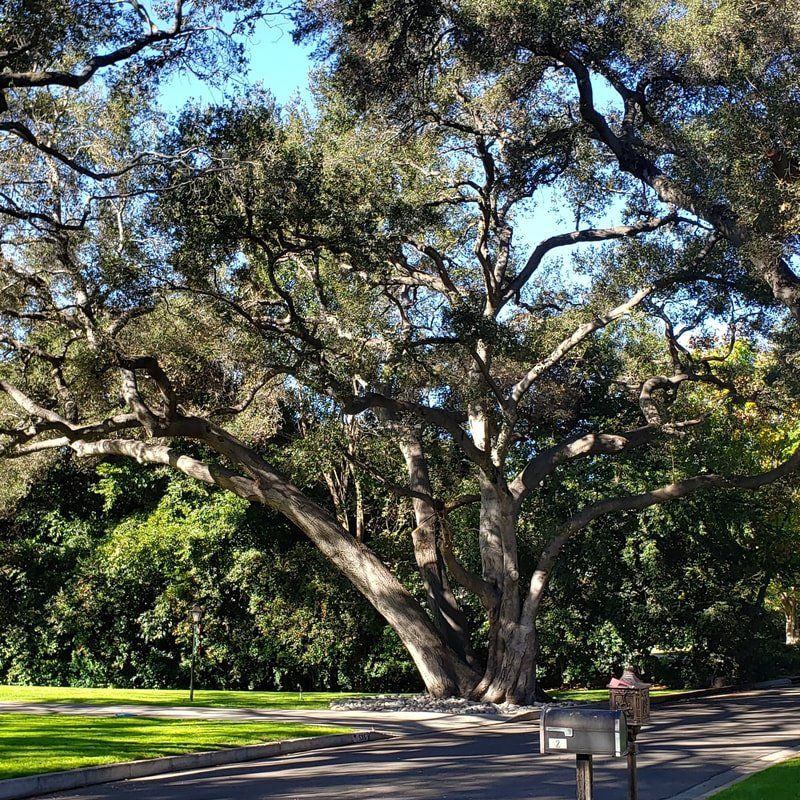Is Spring the Right Time to Prune Trees in Ventura Co, CA?
Learn Expert Insights and Tips
Pruning trees is a crucial aspect of maintaining their health and appearance. In Ventura County, CA, the timing of this task significantly influences the growth and productivity of trees. Spring is generally considered the right time to prune many types of trees in this region, as it allows for optimal recovery and growth.
As temperatures begin to rise, trees enter their active growing phase. Pruning during this time can stimulate new growth and encourage the development of strong branches. This is especially important in a climate like Ventura's, where favorable weather conditions can lead to vigorous growth if managed appropriately.
It's essential to understand which species benefit most from spring pruning. Some trees may have unique requirements or may be better pruned at different times of the year. Knowing the right approach can enhance the health and aesthetics of your trees while ensuring they thrive in the local environment.
Significance of Seasonal Pruning in Ventura County.
Seasonal pruning plays a crucial role in maintaining tree health and aesthetics in Ventura County. Understanding the interplay between local climate and the specific benefits of spring pruning can help residents make informed decisions about their trees.
Climatic Factors Affecting Tree Growth
Coastal Ventura County is characterized by a Mediterranean climate, with mild, wet winters and dry summers. This climate influences the growth patterns of various trees in the area.
During spring, temperatures begin to rise, prompting trees to enter a period of active growth. Increased rainfall during this season can also enhance moisture levels, supporting healthier and more robust foliage.
Ideal conditions for pruning occur as trees start to leaf out but before they reach full bloom. This timing can minimize stress on the tree and reduce the risk of disease. Knowledge of specific species and their growth cycles is essential for effective pruning.
Benefits of Pruning During Spring
Pruning in spring offers numerous benefits. This season allows for easier assessment of tree structure and health as the new growth reveals potential issues.
Improved Air Circulation: Removing old and dense branches can enhance airflow, reducing the chances of fungal infections and pests.
Encouraged Growth: Pruning stimulates new growth, leading to more abundant foliage and flowers. Young, vigorous growth is often more resilient against diseases.
Aesthetic Appeal: Spring pruning provides a neat appearance before the growing season fully begins, enhancing the landscape's visual value.
By timing pruning activities with seasonal changes, residents can foster healthier trees that thrive in Ventura County's unique environment.
Understanding Tree Species in Ventura County
Ventura County is home to a variety of tree species, each with unique pruning needs. Knowing the specific requirements of deciduous, evergreen, and fruit trees is essential for optimal health and growth.
Deciduous Trees and Spring Pruning
Deciduous trees, such as oaks and maples, shed their leaves annually. Spring is typically recommended for pruning these species, as they enter their growing season.
Pruning in spring helps to encourage new growth. However, it is crucial to assess the tree's health and structure before pruning. Focus on removing dead or diseased branches to promote better airflow and light penetration.
Be cautious about excessive pruning, as this can stress the tree. Ensure that cuts are made properly, using clean, sharp tools.
Evergreen Trees and Pruning Needs
Evergreens like pines and firs maintain their leaves year-round. Pruning these trees often occurs in late winter or early spring.
This timing minimizes stress and encourages new growth as the tree emerges from dormancy. Focus on shaping the tree and removing any dead branches.
It's important to recognize that not all evergreens require heavy pruning. Light trimming can help maintain their natural shape without compromising health.
Fruit Trees: Timing for Health and Yield
Fruit trees, including apples and citrus, have specific pruning needs for optimal yield. Late winter to early spring is usually the best time to prune fruit trees.
At this time, trees are less susceptible to disease, allowing for healthier cuts. Remove any dead or overcrowded branches to enhance sunlight exposure.
Proper pruning maintains tree structure, boosting fruit production. It’s essential to know the specific variety, as different species may have varying requirements. Pruning techniques can differ based on the type of fruit produced.
Best Practices for Spring Pruning
Effective spring pruning requires a thoughtful approach. Paying attention to tree health, employing proper techniques, and using the right tools is essential for the best results. At Ventura Tree Services, our technicians have many years of experience in these matters.
Assessing Tree Health and Structure
Before pruning, examine the tree for signs of disease or pest damage. Look for discoloration, dead branches, or unusual growth patterns. Healthy trees typically show vibrant foliage and sound structural integrity.
Assess the tree’s overall shape and balance. Avoid excessive pruning, which can stress the tree. Focus on removing dead or crossing branches to improve air circulation and reduce the risk of disease.
Timing is critical; aim to prune during dry weather to minimize the risk of fungal infections. Spring is especially suitable for deciduous trees that are just starting to leaf out.
Proper Pruning Techniques
Use appropriate pruning techniques to promote healthy growth. We always make clean cuts at a 45-degree angle to prevent water accumulation on the cut surface, reducing the risk of decay. Always prune just above a bud or branch to encourage new growth.
Remove branches in stages if they are large, which can minimize stress on the tree. For larger cuts, use a three-cut method: the first cut under the branch to prevent tearing, the second cut on top to remove the branch, and the last cut at the branch collar.
Avoid topping, as this can damage the tree and lead to health issues. Instead, shape the tree naturally to maintain its form.
Optimal Dates for Different Tree Types
Different tree species have distinct pruning requirements. Here are some key dates for optimal pruning:
- Deciduous Trees: Late February to mid-April is ideal for most deciduous trees. This timing allows for effective healing before they begin to leaf out.
- Fruit Trees: Prune fruit trees like apple and peach from late March to early April. This period encourages fruitful blooms.
- Ornamental Trees: For flowering ornamental trees, aim for late March to early April. Pruning at this time ensures vibrant blooms without compromising tree health.
- Evergreens: Pruning evergreen trees or shrubs should occur from mid-April to late spring, as this allows new growth to set in during warm weather.
Adjusting Schedules According to Weather Patterns
The weather in Ventura County can vary widely, affecting the best times for pruning. Consider the following adjustments:
- Early Spring Warmth: If temperatures rise early, adjust pruning dates forward to take advantage of the growth cycle.
- Late Frost Risks: Monitor forecasts for late frosts especially in the mountain areas of Ventura County. Delay pruning if a frost warning is issued, as cuts can expose trees to damage.
- Rainy Periods: Avoid pruning on wet days to prevent spreading diseases. Work on dry days to ensure cuts heal properly.
- Coastal Humidity Levels: High humidity can increase disease risk. Prune on drier days when possible to minimize this risk.
By observing these factors, you can effectively time your pruning efforts for optimal tree health.
Potential Risks of Spring Pruning
Spring pruning can be beneficial, but it also carries risks that every tree owner should consider. Awareness of these potential issues is crucial for maintaining tree health and preventing future problems.
Disease and Pest Susceptibility
Pruning in spring can increase a tree's vulnerability to diseases and pests. Fresh cuts expose the tree's core to pathogens, particularly during periods of warm, moist weather.
Key points to consider include:
- Fungal Infections: Trees that are pruned in the spring might attract fungal spores that thrive in warm, humid conditions.
- Insect Infestations: Leafless branches can attract pests looking for easy access to fresh growth.
- Timing Matters: If pruning is done late in the spring, new growth may also be damaged by pathogens.
Using sterilized tools and sealing cuts can diminish these risks. Proper timing and technique are essential for reducing pest and disease susceptibility.
Over-pruning and Tree Health
Over-pruning can lead to significant stress on trees, especially during their active growing period in spring. Removing too much foliage can inhibit a tree’s ability to photosynthesize efficiently.
Notable concerns include:
- Weak Structure: Excessive pruning can lead to weak branch structures, making them more susceptible to wind and damage.
- Stunted Growth: Trees may struggle to recover if too many branches are removed, leading to stunted growth and poor health.
- Sunburn: Newly exposed bark may be prone to sunburn, which can compromise tree integrity.
Pruning should always be done thoughtfully. Adhering to best practices for pruning encourages healthy, resilient trees.
Hiring Professional Arborists
Selecting a qualified arborist, such as Ventura Tree Services can significantly impact the health and appearance of your trees. Investing in professional pruning services from us ensures that the job is done correctly and safely.
Evaluating Pruning Services
When considering an arborist, it’s important to check their qualifications and experience. Look for certifications from recognized organizations like the International Society of Arboriculture (ISA). Certified arborists have undergone rigorous training in tree care.
Obtain multiple quotes from different companies to compare services and prices. Ask for references and check online reviews to gauge customer satisfaction.
Ensure the arborist uses the proper equipment and follows safety protocols. They should also provide insurance to cover any potential damages or injuries during the pruning process.
When to Consider Professional Pruning
Spring can be a busy season for tree care, making it a prime time to consider hiring an expert. If trees are overgrown or pose safety hazards, professional pruning may be necessary to prevent issues later.
If you lack the knowledge or tools for safe pruning, calling in a professional is advisable. Arborists can assess the specific needs of your trees and make informed decisions about the best pruning techniques.
In addition, if a large tree requires substantial trimming or if you have several trees that need attention, hiring a professional can save time and reduce the risk of tree damage or personal injury.
Aftercare Following Spring Pruning
After pruning trees in Ventura County during spring, proper aftercare is essential for tree health.
Watering: Newly pruned trees may require more water as they focus on healing. Ensure the root zone is consistently moist, especially during dry spells. Aim for deep watering.
Mulching: Apply a layer of mulch around the base of the tree. This helps retain moisture and regulate soil temperature. Use organic mulch, like wood chips, for best results.
Fertilizing: Wait at least a month post-pruning before fertilizing. Trees need time to recover from pruning stress. When ready, use a balanced, slow-release fertilizer to support new growth.
Monitoring: Keep an eye on the tree for signs of stress or disease. Look for drooping leaves, discoloration, or unusual growth patterns. Early identification of problems can help in effective treatment.
Pest Management: Spring can bring pests that target freshly pruned trees. Regularly check for any signs of infestation and treat promptly using appropriate methods.
Adhering to these aftercare practices will ensure the tree recovers well and thrives in the following growing season.
Environmental Impact and Sustainability Considerations
Pruning trees in Ventura County has significant environmental implications. Proper pruning fosters healthy growth, which enhances the tree's ability to absorb carbon dioxide and produce oxygen.
Benefits of Pruning:
- Health: Reduces disease spread by promoting airflow.
- Growth: Encourages stronger branches and better structure.
- Biodiversity: Supports habitats for local wildlife.
Timing is crucial for sustainability. Late winter to early spring is optimal, as trees are in dormancy. This timing minimizes stress and allows for quick recovery, promoting resilience against pests and diseases.
Sustainable Practices to Consider:
- Avoid excessive pruning: Limit cuts to what is necessary.
- Use proper techniques: Employ clean tools to prevent injury.
- Recycling waste: Shred pruned limbs for mulch to enrich soil.
Awareness of local ecosystems is important. Pruning during the right season supports pollinators, such as bees, which are vital to the ecosystem.
Choosing the right time and method can enhance tree longevity and health. This approach serves both aesthetic and environmental purposes, contributing to a more sustainable landscape in Ventura County.
Community and Legal Guidelines in Ventura County
Ventura County has specific guidelines for tree pruning that vary by community. Homeowners should be aware of local ordinances and regulations.
Other Key Considerations
- Permits: Check if a permit is required for tree pruning. Certain areas may have protected species or heritage trees that need special permission for trimming.
- Best Practices: Follow standard pruning methods to ensure tree health. This includes removing dead or diseased branches and not cutting more than 25% of live foliage at once.
Environmental Protection
- Bird Nests: Avoid tree pruning during nesting season, typically from February to August, to protect local wildlife.
- Pollution Control: Dispose of tree waste responsibly. Many communities offer yard waste programs to recycle debris.
Community Resources
- Local Organizations: Engage with local gardening clubs or tree care associations for advice.
- County Services: The Ventura County Resource Management Agency can provide information about tree maintenance and community-specific guidelines.
By understanding these community and legal guidelines will help ensure that tree pruning is done properly and responsibly in our home, Ventura County.
You might also like
Book a Service Today
We will get back to you as soon as possible
Please try again later
FREQUENTLY ASKED STUMP GRINDING QUESTIONS

WHAT IS A STUMP GRINDER?
Stump grinder machines are very powerful machines (tools) that look sort of like a small lawnmower combined with a circular saw Stump grinders are designed to be rolled up to the stump and then grind it into little saw dust like pieces.
HOW DOES THE STUMP GRINDER WORK?
A stump grinder chews away at the stump wood The stump grinding machine is used to chew away the portion of a tree that has been cut down. Stump grinders use a powerful, rotating blade that rips into the wooden stump as it turns. The teeth of the blade cut the stump wood into very small pieces. The operator will move the rotating blade back and forth over the entire stump as the blade’s action reduces the stump and roots to wood chips. The machine does take the stump down to well below ground level for a complete removal of the stump and the upper roots.
WHAT HAPPENS TO THE WOOD FROM THE TREE STUMP AFTER GRINDING?
Grinding a stump should result in lots of wood chips and saw dust. The grinding produces a lot of these, but they can be used as mulch in your yard or disposed of in your green waste bin. Since you will also have a hole where you’ve just ground out all the stump and root volume, the wood chips can be used to fill the hole and left to decay. With or without his fill you can use soil to fill the hole so that it’s even with the surrounding ground.
ARE STUMP GRINDERS THE SAME AS STUMP REMOVERS?
Stump grinders and stump removers are different things. A stump remover is auger-like and bores down into the stump from above, removing all trunk wood and anchoring roots.
CAN I RENT A STUMP GRINDER AND DO IT MYSELF?
Just be aware that stump grinders that are available for rent by homeowners will be smaller and less powerful than ones used by professionals. It’s unlikely you’ll find a range of rental stump grinder models to choose from. Usually stump grinders are used by trained tree-care specialists. As is the case with most heavy, powerful equipment, the chance for injury is high. Homeowners homeowners will have to be sure of their skills before operating a stump grinder.
In addition, operators will need protective equipment to protect them from noise and from flying debris. Debris thrown off the machine can be sharp pieces of wood. But the grinders can cut anything else that might be hiding in the ground -- buried old fence posts, old piping, bricks, glass, nails, or misplaced tools. Professional tree trimming and stump removal companies also have in place the proper insurance against accidental damage to your property from the tree removal and stump grinding operations. As a DIY’er, you should think about getting this kind of insurance and also additional insurance that will cover any damage to your neighbor’s property.
CAN A TREE BE CUT DOWN WITHOUT LEAVING A STUMP?
Any tree-removers will find it impossible to cut a tree down flush with the ground. There will always be a stump remaining to deal with.
.
DOES A TREE STUMP NEED TO BE REMOVED?
It’s ultimately up to you, but you should consider what to expect if you don’t remove the stump. Many homeowners don’t realize beforehand how much a tree stump will stand out in your landscaping after a tree is removed. This is especially true if the rest of your property is tidy and well maintained. By grinding out the stump, you have a clean slate for future landscape design where the tree used to be. Because stump grinding eliminates the stump wood down to below ground level, grinding the stump will ensure that your tree won’t re-sprout with new growth around the perimeter of the stump. This reason is one that resonates most often with property owners. Leaving a stump in place can mean having to repeatedly prune sucker growth, a garden chore that offers little satisfaction, as it is unending.
Suckering sprouts are a natural response by the tree after the trauma of being cut down, and the natural response to survive, In reality, none of this growth is useful and won’t grow into a healthy new tree. Instead, what will result will be a lot of sprouts that turn into branches that will need to be cut down over and over until the tree exhausts its energy reserves. And this can take a long time.
It isn’t necessarily an imperative for the leftover stump to be removed. However, do you want to look at a tree stump for years to come, or deal with its suckering growth? Probably not! Depending on the size, height, and location of the stump, it may be an eyesore and a tripping hazard. The rotting stump will also attract pests, develop fungal diseases, and cause soft, sunken spots in the surrounding lawn or garden as it decomposes.
CAN I BUILD OR PAVE OVER THE AREA WHERE A STUMP WAS GROUND OUT?
You should consider whether or not you would want to build something where the tree stump is, such as a patio or paving. Since the tree stump is wood, it will breakdown over time. The decomposition means that the remaining stump isn’t a stable base material for construction. Any foundations, footings, or rigid materials will move or sag over time. So even if the stump is ground out, there may be root materials left underground ground that will decompose and settle, damaging any construction placed on it. Make sure all remaining stump and roots are removed and that the hole is in-filled with native soil (not bagged potting soil), and then compacted to the level required if any construction is planned.
WHAT ARE THE ALTERNATIVES TO STUMP GRINDING TO REMOVE A TREE STUMP?
If you have a very small stump, you may be able to remove it with leverage and hand tools. This is strenuous physical work, but it’s not impossible to do.
You’ve probably seen chemical stump remover at your local nursery or hardware store. These products are generally made of potassium nitrate, and work by speeding up wood decay. They require that you drill holes into your stump, fill them with the chemical stump killer, add water, cover your stump, and wait. Potassium nitrate isn’t usually poisonous, but it might cause eye and skin irritation. Additionally, you’ll have to keep children and pets away from the chemically treated stump.
A 3rd way stumps can be removed is to pour kerosene over a stump and light it on fire. Most people don’t think that flaming tree stump is a good use of time and resources. Follow that lead.
IF YOU NEED TO HAVE A STUMP REMOVED
Call Ventura Tree Services first. We will be able to evaluate your situation and give you our educated recommendations as well as an estimate of how much it will cost to remove the tree stump. Generally, most people find it quite affordable. Stump removal is done quickly. Even large stumps usually take only a few hours.
We always offer our stump removal services when when cutting down and removing a tree. We will explain the benefits of having your stump removed professionally and describe the benefits of tree-stump mulch for your landscaping.



